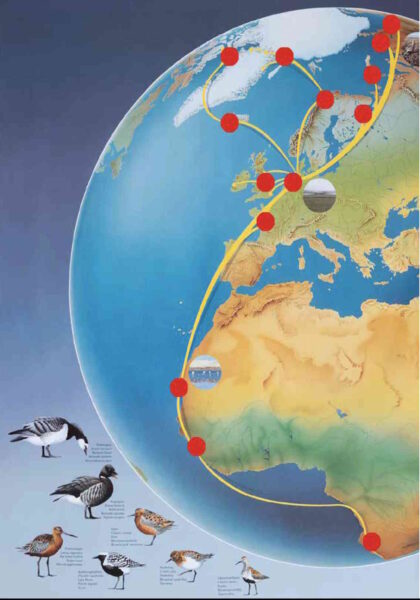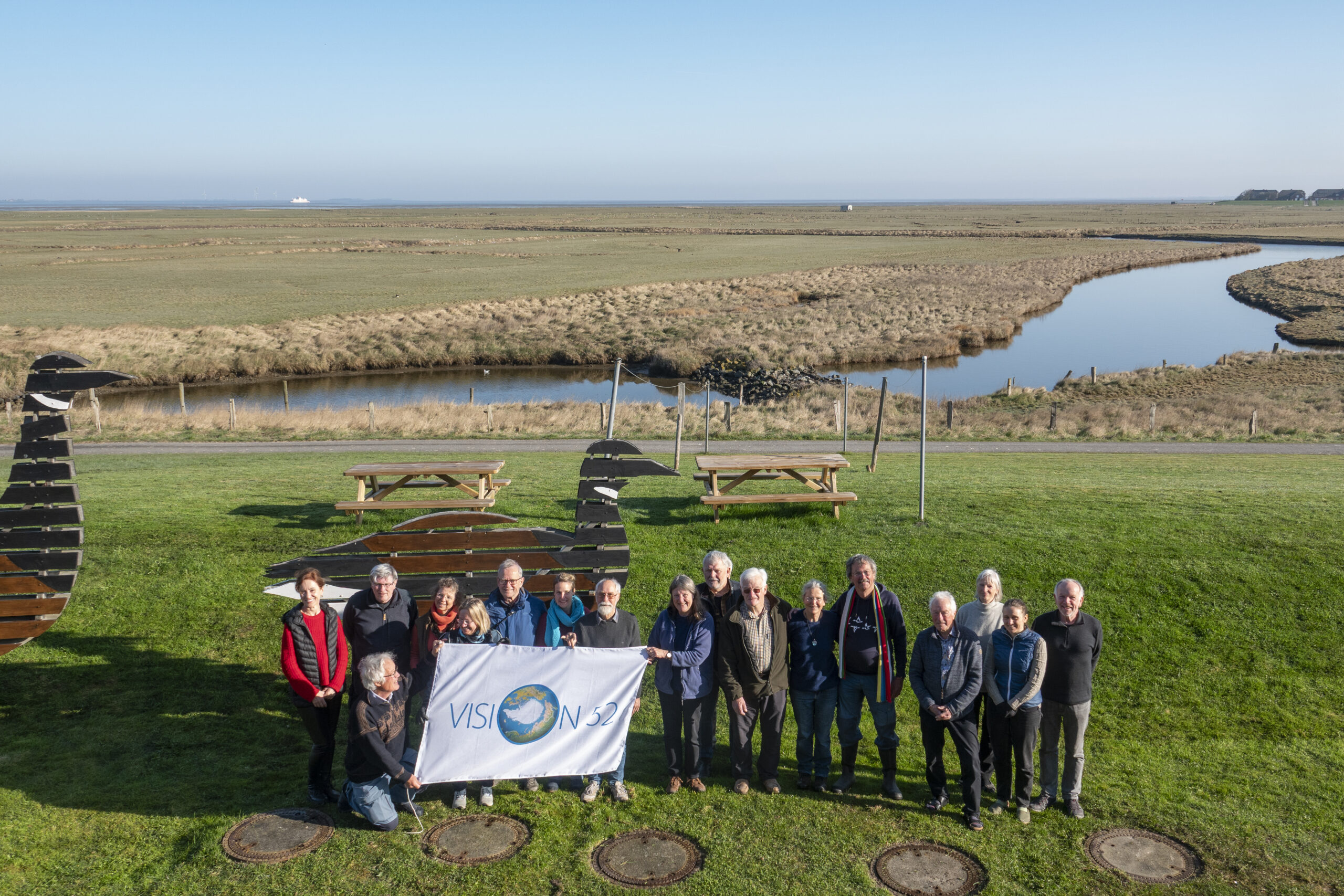This was the sentiment expressed by several participants in the East Atlantic Flyway Seminar, which took place from 11 to 14 April on Hallig Langeness in the Wadden Sea. 20 engaged conservation experts from the UK, the Netherlands, Germany, Denmark, Norway, and Ukraine gathered in great spirit following up on a similar event on the same island in 2023 where the book on the East Atlantic Flyway of Coastal Birds was the main outcome. Again the gathering took place back to back with the “Ringelganstage” (Brent Goose Days). This year, the Schleswig-Holsten Wadden Sea National Park is celebrating its 40th anniversary, and there are only 5 years left to reach the 30×30 Goal the world has committed to. Focusing further on the East Atlantic Flyway, where the Wadden Sea has a central role, we significantly deepened the understanding of what has been achieved in the region between the coast of West Africa, Western Europe, and the Arctic by collective conservation efforts, and what still needs to be aimed for.

Here you find comprehensive documentation of the seminar. Among other, you will find answers on
- How the national park Schleswig-Holstein Wadden Sea National Park was achieved and further developed;
- How the entire international Wadden Sea became a UNESCO World Heritage site;
- What role research did play in this process;
- How important the local initiative for a UNESCO Biosphere area was;
- How the Danish Wadden Sea National Park differs from the German;
- How a change from opposition to partnerships was achieved in the Danish Wadden Sea area;
- The EU-Blue4all Project and Conservation Efforts in the Danish Wadden Sea;
- Protecting Flyway Ecological Networks in the East Atlantic Flyway;
- Using flyway ecological connectivity to identify and protect sites from development threats – the example of the Tagus Airport in Portugal;
- How hunting closure affected the population development and behavior of Dark-bellied Brent Geese;
- How the history of hunting waterbirds in protected areas in Denmark changed, and how the population of the Svalbard Light-bellied Brent Goose developed;
- Trends and distribution for Bewick’s Swans in the NW European and East Med–Central Asian populations;
- A worldwide assessment of flight distance changes of waterbirds in relation to hunting;
- Examples and effects of no-take zones in marine protected areas from different parts of the world;
- How Nature Conservation, Agriculture, and Coast Protection fit together on the South-East Coast of England;
- The Western Agder Biosphere Initiative in Norway;
- History and mission of the “Folkeaksjonen LEVE HAVET” for safeguarding the marine environment and sustainable fishery around the Lofoten, Vesterålen, and Senja in Northern Norway;
- Development and Perspectives of the Wadden Sea Flyway Initiative.
You are welcome to study all this valuable material in depth and let us know about your engagement along the East Atlantic Flyway.

